10 Best Violin Brands
Table of Contents
Looking For The Best Violin Brands
The quality of your performance hangs heavily on the quality of your violin. Professionals, though skilled, cannot produce the high standard of sound they must with a poorly-constructed violin, but in the same breath, elite sound isn’t something that’s needed for a beginner. That’s why I’ve made this list of the best violin brands.
No matter your skill level or preference for sound, this guide exists to help you choose the perfect violin for your unique needs. Here, I’ll introduce you to some of the top names in the industry.
Part of the string family, the violin is said to be the most-loved and distributed instrument around the world. There are a ton of options out there, but as you can imagine, they’re not all built with the same craftsmanship or attention to detail.
First created in Italy in the 16th century, the violin is adored for its unique lyrical voice and clear, ringing tone. Evolving over time, the stringed instrument has been the vessel of many famous composers’ music, including Mozart, Beethoven, and Bach.
This list of best violin brands will take you through a variety of well-known names, beloved for the quality they provide as well as their timeless (but sometimes modern) designs.
10 Best Violin Brands
#1: Stradivarius
Now, I’ll start off by saying that unless you’re a millionaire or have a great-aunt who inherited and stashed her Stradivarius away her entire life, you most likely won’t get your hands on this particular violin.
Before landing on my guide of best violin brands, you most likely came across this name, and there’s a good chance you already know of its popularity.
Not popular because of how many people play it, instead, Stradivarius has made an incredible name for itself because only a few more than 500 of these violins still exist today. The face behind the name is Antonio Stradivari, who crafted his violins for about 60 years in the 17th century.
The Italian luthier is the one name that every musician associates with impeccable, high-quality violins. And though it’s every string musician’s dream to play one, very, very few ever will.
This may be something that adds to the allure of this brand. But also, the ones who have had the chance to play one remark on how incredibly smooth, rich, and clear they are—unlike any other violin they’ve ever played. Made from a mix of spruce, willow, and maple, Stradivarius violins sell for millions.
You’ll find Stradivarius-inspired styles in many of the best violin brands listed here, but experts say that because of the conditions of the wood, treatment, and varnish used in the 17th century, the exact condition of the violin cannot be replicated.
Highlights
- Regarded as the highest-quality violin in existence
- Impossible to exactly replicate
- Only 500 still exist
- Over 300 years old
- Incredibly expensive
#2: Yamaha
Following up a historic brand like Stradivarius is a tough job, but Yamaha’s user-friendly selection brings something new and fresh to the table for modern violin players. Their options include styles intended for beginners and young players, with one high-quality violin for more advanced musicians.
Using carefully-selected wood and a special shading oil varnish, Yamaha violins have a warm tone, are easy to play, and it’s not hard to create an amazing sound with one. The brand is known for their consistency across their instruments and have been a go-to for many players new to the instrument.
Founded in 1897 by Torakusu Yamaha, the brand was originally called Nippon Gakki Co., Ltd but switched over to Yamaha in the 1900s. Yamaha was skilled at instrument repair and decided to open his own shop to improve musicians’ experience with their instruments.
This ultimately translated to creating instruments that performed well, and over time the brand became known as one that can be counted on. Their selection of classic, electric, and silent violins ranges from $350-$780.
Highlights
- Working to reduce waste & recycle
- Sustainable wood harvesting
- Sponsors tree planting activities around the world
- Great for beginners & young players
- Offers courses
- Tons of resources available online
#3: Stentor
When choosing a brand, it’s critical to find one that’s consistent across their instruments. That way, you’ll know you can depend on them the next time you need to go shopping. Stentor is one such name that people associate with quality and consistency.
A maker of student and orchestral violins, this brand provides musicians with instruments for all levels. Carved from solid tonewoods, Stentor violins focus on details. Individually “thicknessed” for superior sound quality, they’re described as smooth, balanced, and consistent.
The brand’s name comes from Greek mythology, taken from a god that was said to have the voice of 100 men. Established in South London in 1895 by Edward C. Doughty, Stentor got its start selling gut strings and rosin. It wasn’t until 1960 that his grandson Michael Chapman Doughty founded Stentor Music Co. and began creating instruments.
You’ll find five standard and six student violins in its collection, with hand-selected spruce fronts and maple backs. Ebony fingerboards and pegs give its violins a traditional look while shellac provides glorious shine.
Offering a variety of common sizes, a Stentor violin will cost you at least $175 and as much as $630 for its Conservatoire model.
Highlights
- Good range in selection
- Affordable
- Carries common sizes
- Great quality for the price
- Reliable brand
#4: Cremona
Cremona is a city in Italy known for its rich history in violin crafting. It’s the place where Stradivari made his violins, and this brand stays true to traditional manufacturing methods, offering a selection of stringed instruments for beginners, masters, and professionals.
Cremona, also known as GCV, was founded in 1989 but has a traditional feel that conveys the city’s rich history. The winner of numerous awards for tone and craftsmanship, the brand’s violins are highly regarded for their tone quality similar to iconic violins from the same area.
Cremona violins are made by those who have undergone special schooling and are mentored by well-respected Italian luthiers. Offering a range of violins for every level of player, you’ll find a selection within each category from Debutte (novice) to Fanfani (professional musicians).
It even makes Cremonese replicated violins to mimic the ones made by Stradivari and Guarneri. All beautifully constructed for each level of musician, these violins are crafted with care and purpose to help you get the most out of your instrument. Maple and spruce are common woods found within Cremona’s collection.
You can pick up a novice design for $150 or pay around $2,000 for one in its master series.
Highlights
- Range of affordable prices
- Violins for every skill level
- Easy to play
- Made to suit levels of different musicians
- Made by luthiers trained by renowned Italian craftsmen
#5: D Z Strad
D Z Strad is a music shop nestled on the busy streets of New York. Manufacturing their own range of violins, the store also carries antique models made by iconic luthiers like Bernadel and Hofner.
Their collection is truly something to behold, holding classic and historical styles from some well-known luthiers. Their personal violin line-up includes classical, electric, and baroque models, including a few inspired by Stradivarius.
Founded in 2017, you’ll look through options for beginners, intermediate, and advanced players known for their sound and tone. D Z Strad’s most affordable violin is $295, while most hover around the $1,200 range. The most expensive pick is the vintage Leon Bernadel for $25k.
Highlights
- Variety of violins including modern, classic, and electric
- Some affordable prices
- Carries vintage violins
- Known for quality
#6: Mendini Violins
The first thing I noticed about Mendini violins? They look really good. The brand offers a small selection of quality violins for incredible prices, using rich, glossy woods and alluring finishes with ebony fittings. With powerful, impactful tones, Mendini’s violins are affordable but don’t skimp on quality.
They’re designed well to last for years, and more specifically, to grow with musicians as they progress in skill. You’ll find one factory-made model in its collection, but the rest are handcrafted with spruce and maple. They’re outfitted with gorgeous fixtures and authentic Mongolian horsehair strings.
An offshoot of Cecilio Violin, Mendini’s violins go for between $100-$200.
Highlights
- Incredibly affordable
- Great quality for the price
- Ideal for beginners
- Made with high-quality materials
- Great-looking designs & finishes
#7: Knilling
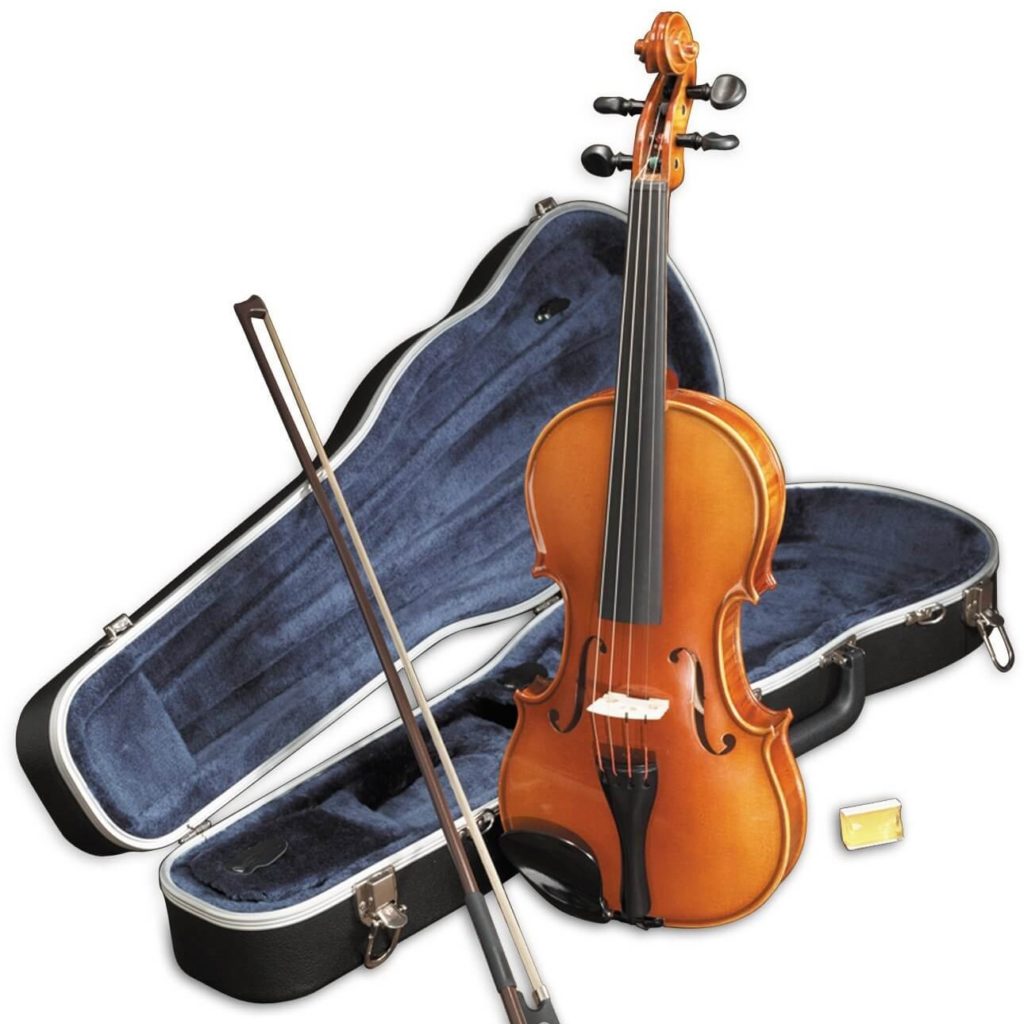
Knilling believes that “a musician’s voice is a unique gift that must be sought out and honed,” creating instruments to help strengthen that voice and support it while it transforms. Founded in 1922 by Bernard Kornblum in St. Louis, the brand is named after the famous German luthier Johannesburg Knilling.
The brand is highly concerned with the look, sound, feel, and life of the instruments it produces, using the right tonewoods and techniques to develop instruments that are a pleasure to play and listen to. Their violin line includes picks for students and professionals, each one inspected by hand before it’s shipped out.
Giving customers the option to tailor their instruments to their preferences, Knilling will customize your piece until it meets your discerning needs. Each one is backed with a lifetime warranty.
Knilling makes shopping online for the right violin very easy, categorizing violins by instrument and series, and letting you browse through standard, intermediate, or advanced violins. They offer a total of four series, including Sebastian, Bucharest, Anton Eminescu, and Nicole Gabrieli, and each one is available in a range of popular sizes.
You’ll find classic and modern violins in Knilling’s inventory, including Guarneri and Strads using spruce and maple with spirit finishes. You can tell the level of quality just by looking at them, which is why its prices are slightly elevated and range between $360-$1,600 depending on where you buy yours.
Highlights
- Wide range of prices
- Options for all levels of musicians
- Inspected by hand before shipping
- Can be customized to your preferences
- Tons of size options
- Great quality
#8: Eastman
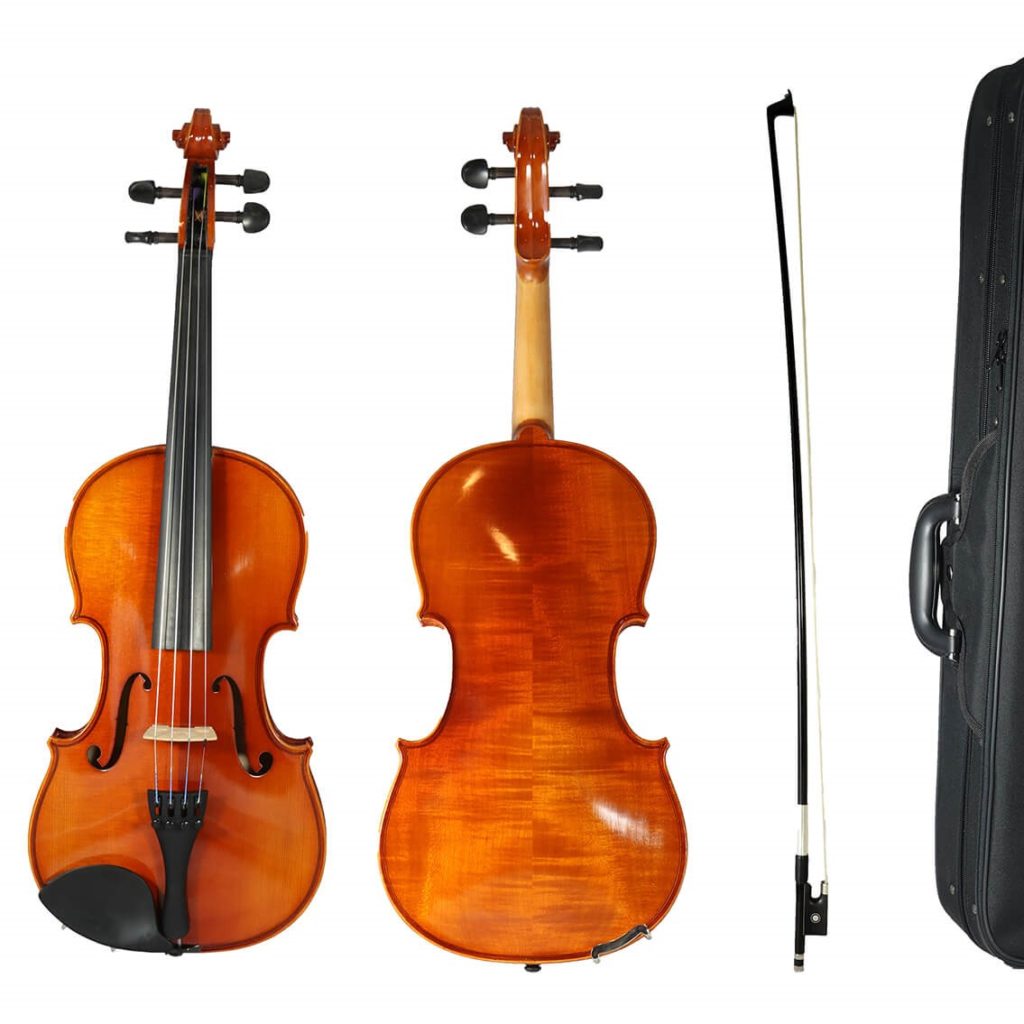
Eastman bridges the needs of the modern violinist with the classical techniques known and loved by past generations. Founded in Boston by Qian Ni in 1992, the brand started as a small shop whose retail location was a car trunk to one that manufactures and distributes instruments across the globe.
Revered for their “tonal beauty” and superior craftsmanship, Eastman’s handcrafted violins are made using century-old techniques that help them reach their full potential in terms of sound and tone. The collection consists of rich, seasoned woods like spruce and maple and beautiful fixtures modeled after classic styles.
Eastman violins are played by professionals including Chris Murphy and Ada Pasternak, and the brand offers styles to thrill both students, professionals, and those who want to take things electric. You can get your hands on an Eastman for between $630-$3,800.
Highlights
- Very high quality
- Superb sound and tone
- Range of instruments for beginners and professionals
- Carries a range of sizes
- Uses high-caliber materials
- Manufactures both modern and classic types
#9: Primavera
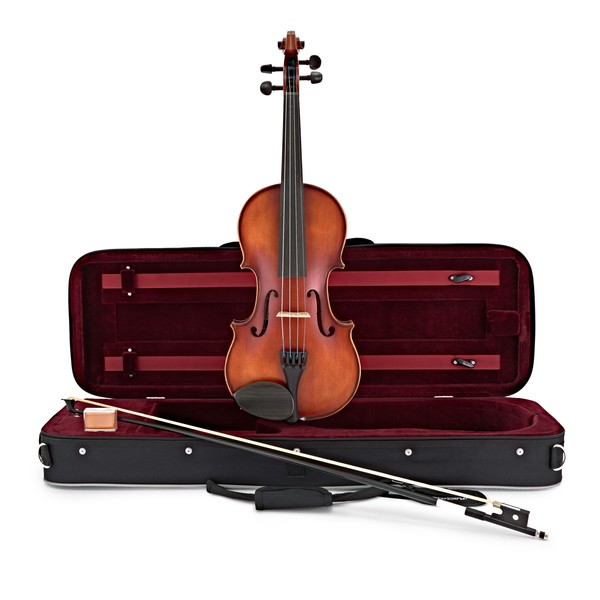
Primavera violins are marked for their variety of small sizes. Ideal for beginners and young children, their violins look great, sound amazing, and are made to stand up to constant playing and practicing.
This is one of the best violin brands that’s particularly known for their value. They use quality materials and construction to create something that feels sturdy and dependable in a beginner’s hands. Easy to tune and properly shaped, Primavera offers six different violins, each one available in a range of sizes.
An award-winning brand, the Primavera 200 won Best Bowed Instrument three years in a row at the Music Industries Association Awards. It’s available in sizes down to 1/32—which is the smallest size I’ve seen yet on this list of best violin brands. Finished with a satin varnish, this brand’s violins are a beautiful starting instrument to get musicians excited about playing.
Primavera’s are sold for $175-$300 depending on where you look.
Highlights
- Very affordable
- High-quality fitting & finishing
- Amazing value for the price
- Durable
- Great for beginners
- Attractive design
#10: Scott Cao
Scott Cao is one of the best violin brands that are truly synonymous with quality and aesthetics. All of their designs, whether for beginners or professionals, are hand-carved from European tonewoods and painstakingly looked over. You won’t find a single hair out of place.
One of the best-sellers in his collection is the Scott Cao Kreisler, a copy of a 1730 Guarneri violin owned and played by violinist Fritz Kreisler. Known as some of the best violins crafted today, his collection rivals those from older violin companies and is held in high regard in the music industry.
The brand was officially established in 1989 and has since won multiple local and international awards for quality, tonality, and workmanship. Loved by students, professionals, and soloists, Scott Cao violins are chosen for their gorgeous design and outstanding tone quality.
His Standard models are made from Italian spruce with Bosnian maple, finished with straight or antique copy varnish to replicate vintage sounds. His Superior models are crafted from wood that’s been around for at least 25 years. This helps them sound like ones that are 50-100 years old.
You can own a Scott Cao for $600-$30K. Most novice/intermediate models sit around the $1,200 mark.
Highlights
- Wide array of violins
- Range of prices
- Exceptional quality
- Thoughtful detail
- Made from upscale materials
- Many size options
How to Shop For The Best Violin

There’s a lot that hangs on finding your perfect violin. Your experience with the instrument depends on the size, type, brand, and quality you buy, so it’s important to pay special attention to the fine details at each company you shop with.
To help you avoid running into trouble and buying a violin that’s totally unplayable (they exist), I’ll walk you through some areas you may want to pay attention to as you make your way through the top 10 best violin brands.
Brand
Buying from a reputable, recognized brand is a surefire way to get a quality violin. This is one you’re probably not going to take a chance on and that’s the main reason I put together this list of best violin brands.
When deciding which company to buy from, you’ll want to consider how credible they are. All of the names here are known and loved within the music scene for beginners and masters, but there are some with stronger reputations than others, as well as some that have been in business longer.
The more time a luthier has been in business, the more experience they have with making violins, and the better their finished products will be. Though it’s important to look into how old a company is, more so, it’s important to check out how long the luthier has been in their craft.
Since a brand’s reputation can be a critical part of choosing a violin, you may also want to consider what makes one stand out from another. If you’re interested in looks and feel, opt for one that uses a certain kind of lacquer on all of their violins. If you’re searching for an instrument with a vintage sound, look for a brand that uses vintage crafting techniques.
Types
Depending on who you ask, there can be anywhere from 3-10 different types of violins. The main areas that make each of them different are their size, genre, and time period and include baroque, electric, classical, five-string, electric-acoustic, fiddle, and viola.
The baroque type was the first standardized style of violin made by great luthiers like Stradivarius, Amati, and Guarneri. This type typically has a shallower body with a thicker neck.
The classical violin is more modern and is the one that concertos by iconic composers like Bach are played on. Their defining point is a tighter string tension for greater sound projection.
Electric violins are made with a pickup and are plugged into an amp for louder sound. These have a similar outline to a violin but do not have a wooden body. They look sort of like a skeleton of the traditional violin. Electric-acoustic types can be played with or without the amp and look like a regular violin.
Fiddles are basically violins played for a different genre of music and are marked by their flat bridge. Violas are larger than violins in size and produce a richer, deeper tone. 5-string violins are exactly what they sound like, allowing for a greater range of sound.
So about their sizes? An adult-sized violin is called 4/4 while a child’s size violin is 1/16. Some sizes go all the way down to 1/64, but I only came across one of the best violin brands that carry 1/32 size. In other words, tiny sizes are rare.
Other popular sizes include 1/10, 3/4, 1/8, 1/2, and 1/4 which is actually just about 1 inch smaller than the adult’s 4/4 size.
Materials
The most common materials used to make a violin are spruce, maple, ebony, willow, and rosewood. You’ll notice that most of the brands use ebony fingerboards but some use rosewood. Spruce is perhaps the most common wood used for the top of the violin, whereas maple can be found on the bottom.
This mix is said to provide stiffness to the violin and produce the right amount of sound damping. Stradivarius violins are made with spruce for the top, willow for the interior lining and blocks, and maple for the back, neck, and ribs.
Craftsmanship
You’ll find that a lot of the best violin brands construct their violins after some of the greats like Stradivarius and Guarneri. These styles are highly coveted because of their superior craftsmanship and attention to detail which ultimately affects the sound quality the violins produce.
Extraordinary violin craftsmanship is defined by the skill and discernment of the luthier themselves. For example, luthiers in Cremona must undergo special training that teaches them the ancient traditions of crafting a violin. This schooling ensures that the violins they craft will be of outstanding quality to retain the highly respected Cremona reputation.
I don’t have to tell you that a cheaply crafted violin won’t sound as lovely as one that’s been expertly crafted. But why is that exactly? The sound of a violin heavily depends on the shape, quality of materials, and length of its f-holes.
If one of these is off (say, the body isn’t perfectly symmetrical or there are gaps in between the body and the top), your instrument won’t have an adequate projection or may sound less clear.
Skill level
Almost every single one of the best violin brands mentioned here makes violins for beginners and advanced players. You’ll notice that more expensive, higher-quality brands cater to professional musicians and won’t have many options for novices.
It’s said that less expensive, simple violins are ideal for beginners considering they will most likely outgrow their instrument (in the case of kids), or may not end up pursuing it in the long run.
An affordable violin is a good choice for beginners, but you’ll also want to stick to either classical or baroque styles. Stentor, Mendini, and Cremona all offer great, quality options for beginners.
Which type of violin professionals choose depends on their playing style. Masters of their craft, professionals may opt for any kind of violin they’re most skilled in. A few names on this best violin brands list that offer high-caliber, professional styles include Scott Cao, Eastman, and Knilling.
Care
As with any musical instrument you want to last, it’s important to properly care for your violin. General maintenance and care tips include regularly cleaning your instrument with a microfiber cloth, using violin-specific cleaning products, and always storing it in a case when not in use.
You may also want to protect your violin inside its case by wrapping it in a silk handkerchief or using a leather cover. Both of these will safeguard your instrument against humidity and temperature changes inside the case.
Price
What you should pay for a violin depends on your needs. With the best violin brands, the more an instrument costs, the higher in quality or craftsmanship it is, so beginners or children may not want to spend too much on their first violin.
If you’re a professional, then it’s important to choose a violin that meets your playing style and preferences. You may find that a Stradivarius design is ideal for your music, and with that, you’re bumped up into a certain price category.
FAQ
What is the difference between a baroque violin and a modern violin?
Since their creation in the 16th century, violins have changed a lot. Baroque period violins produce a different sound than modern styles do, and this has everything to do with their construction.
Since baroque violins use a tuning system specific to Baroque period instruments, they’re tuned lower than modern versions. With a flatter neck and smaller bass bar, there is less tension on their strings which produces a lower pitch. Here’s a side by side comparison of the two to give you an idea of what makes them so unique:
Strings
- Baroque: Gut (aka sheep intestine)—produces a softer sound
- Modern: Steel—produces a louder, brighter sound
Neck, Fingerboards & Bridge
- Baroque: Shorter, thicker, and flatter—allows for lower pitch
- Modern: longer, angled, and higher—produces more tension
There is also no chinrest, fine tuners, or shoulder rest on Baroque violins, whereas modern styles have a plastic chin piece, fine tuners on every string, and have the option of a shoulder rest. All of these things lead to completely different playing experiences and changes in tone and pitch.
Why are Stradivarius violins worth millions?
A Stradivarius violin made in 1719 by the iconic luthier sold for a record price of $16 million. It was in great condition despite being 300 years old, and that’s just one of the reasons his violins are so popular today—they’re incredibly well made.
Antonio Stradivarius was an elite craftsman who tirelessly dwelled on his violins to create what’s considered the most perfect string instrument of its kind. What did he do that was so special? It’s all in the type of woods he used, the chemical treatments applied to resist woodwork and fungi, and the special kind of varnish.
Researches suggest that it’s a combination of these details that leads to his instruments’ balanced pitch and rich tone. Life was different 300 years ago, and studies tell us that when Stradivarius was making his violins, the weather was cooler than it is now, leading trees to produce denser wood.
The condition of the wood he would have used in his violins isn’t typical of the wood used today. But despite the numerous theories, some musicians say it was his unique genius that allowed for such perfection. Whatever it is, today, the value of Stradivarius violins is only increasing, with some being valued as high as $45 million.
What size violin is best for a beginner?
There’s no specific size that’s best for beginners, it’s all about your size. I’ll run you through a few different popular sizes to show you the difference between them:
- 4/4 is the standard size that most adults play
- 7/8 size may be better suited to smaller adults or those with smaller hands
- Children typically fit a 1/16 very well
Violins are made in quite a few different sizes, and the best way is to go into your local music shop and get measured. You may be able to try out the violins in person and feel which one fits best too.
Can you learn violin by yourself?
If you have the drive and the right resources, you can do anything you put your mind to. There are heaps of online guides that can help you learn and read music, as well as many video tutorials to walk you through playing chords.
The guidance of a teacher who knows their instrument is invaluable though, as they’ll be able to correct you in the moment and help you understand what you’re doing wrong, or encourage you that what you’re doing is right.
Are violins high maintenance?
Violins are considered a high-maintenance instrument. Generally, you can expect to carry out the following tasks on a regular basis to keep it in tip-top shape.
- Wipe it down after each time you play it
- Clean the strings before you tune it
- Ensure the correct humidity is kept within the case (45-55% is great)
- Take care of the tuning pegs
- Change the strings regularly
Since a special type of varnish is used for violins, you’ll need to make sure you have the right kind of cleaner that will not cause harm to your instrument. You’ll also need to use a microfiber cloth to wipe down the strings, and store your violin with the proper protection.
If you don’t feel comfortable cleaning your instrument, you can always drop it by the shop you bought it from. They’ll have everything needed to properly clean your instrument and you won’t have to worry about picking up the right supplies or carving time out of your weekend to do it.
Final Thoughts
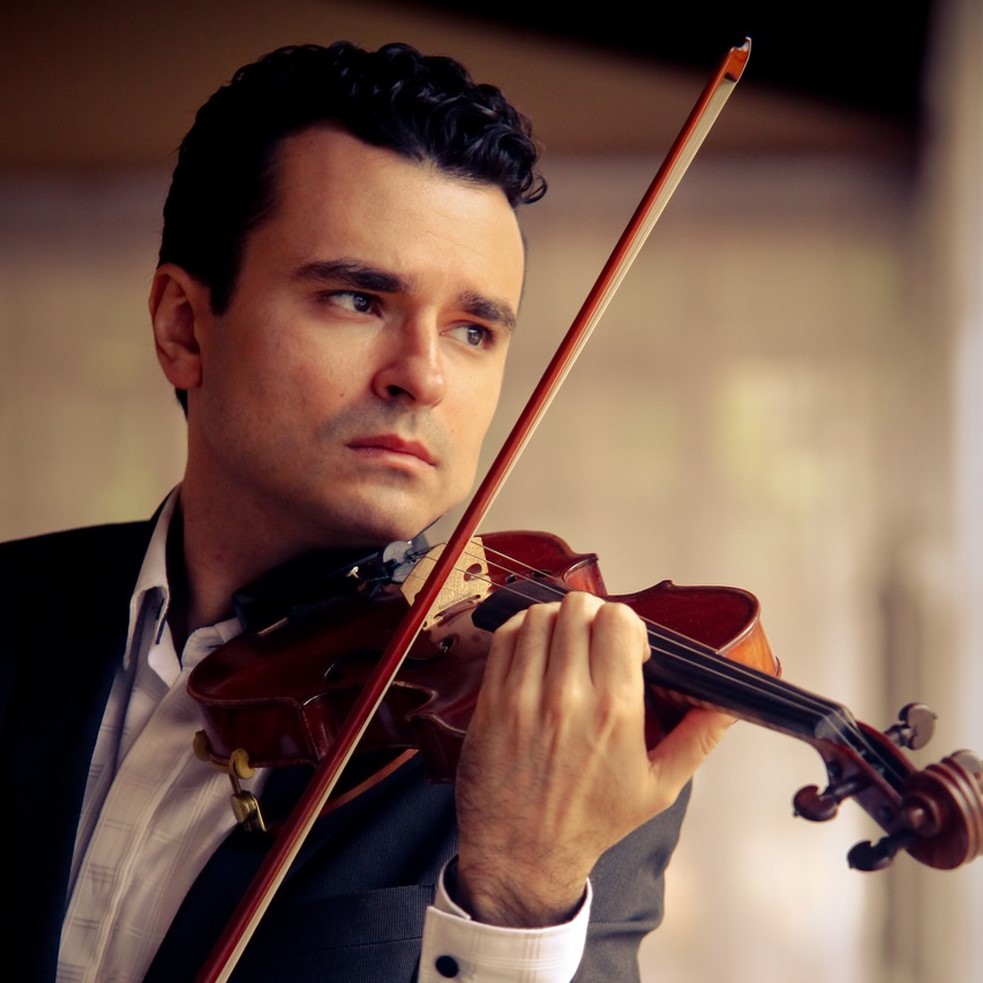
There is a lot of thought that needs to go into buying a violin, that is if you care about how it sounds and want it to last more than 1-2 years. Purchasing this instrument requires more deliberation than other instruments, and that’s precisely why I put together this list of best violin brands.
Even though these brands offer a range of quality, they’re all well-known and trusted within the music community for offering high-caliber, expertly-crafted violins. Whichever you choose depends on your skill level, sound preferences, and size, so it’s a good idea to know what you’re looking for before diving in.
Check out our other curated lists of top brands:


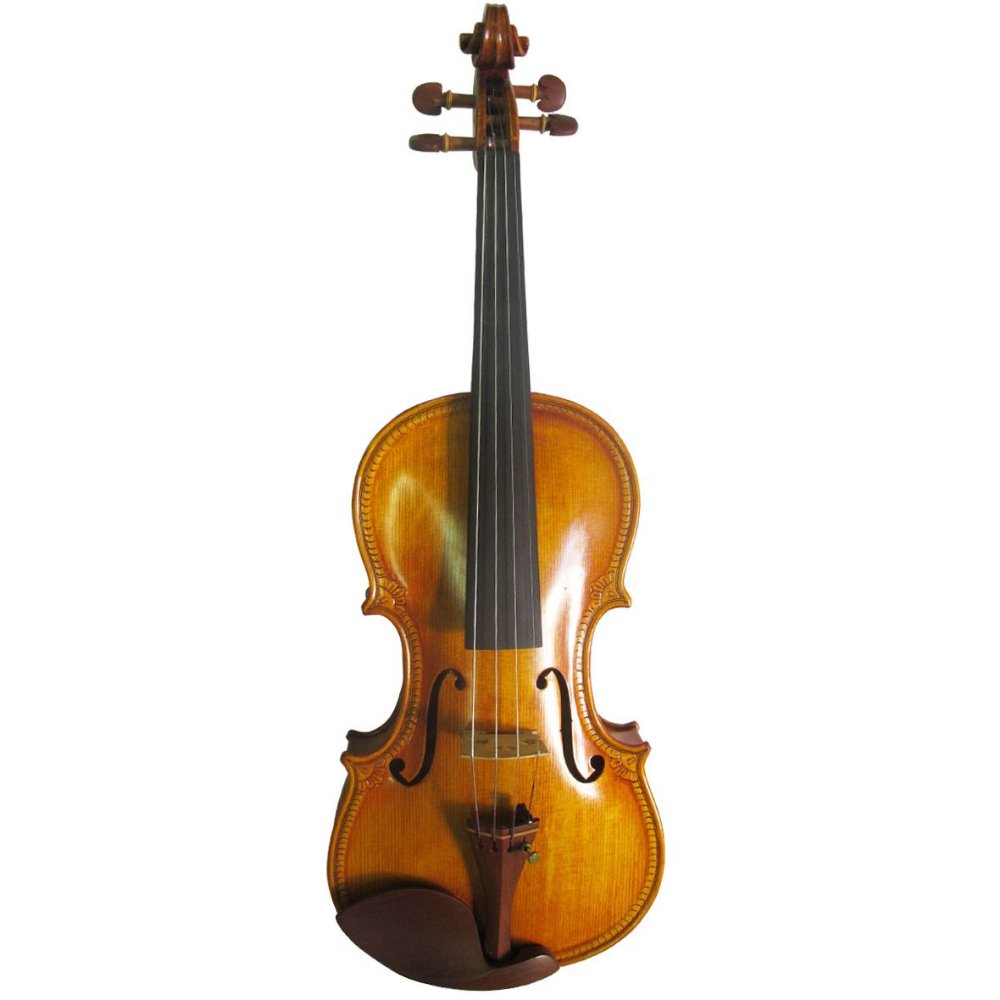
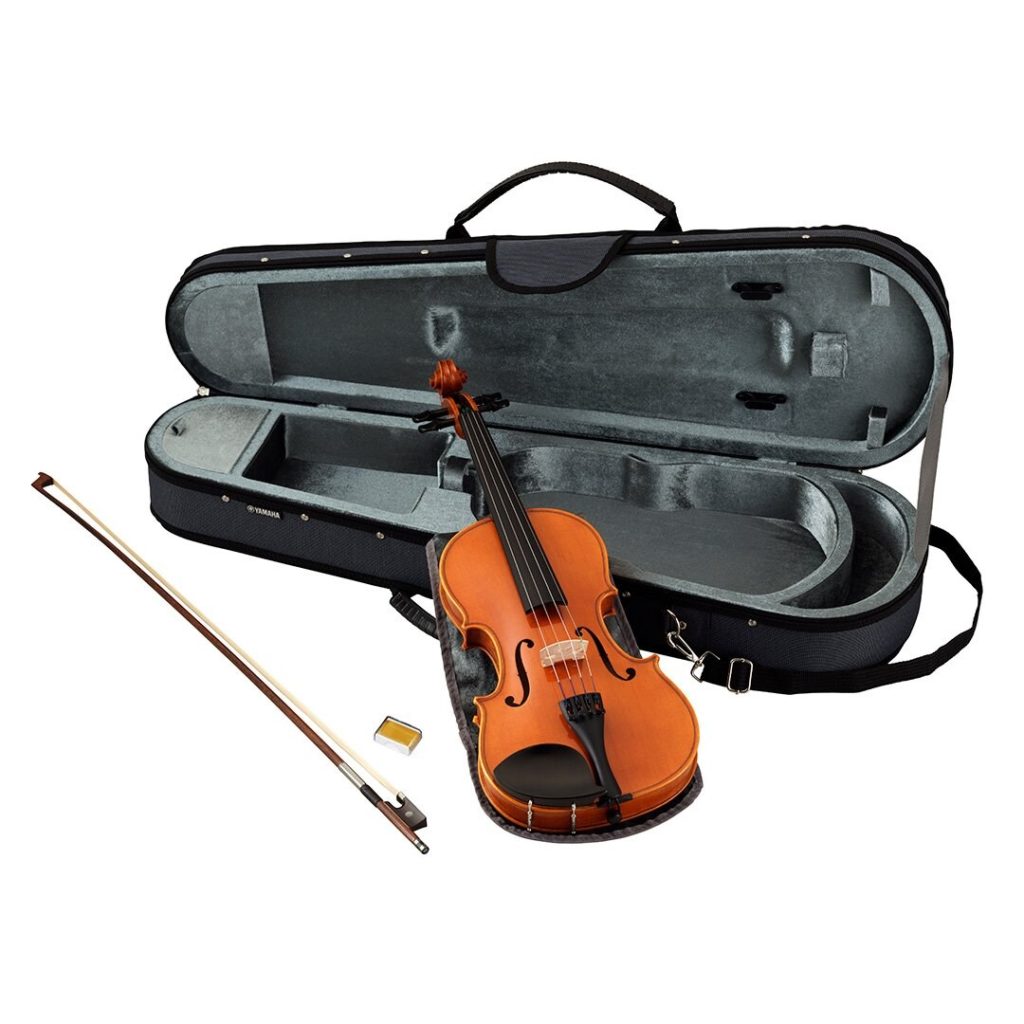
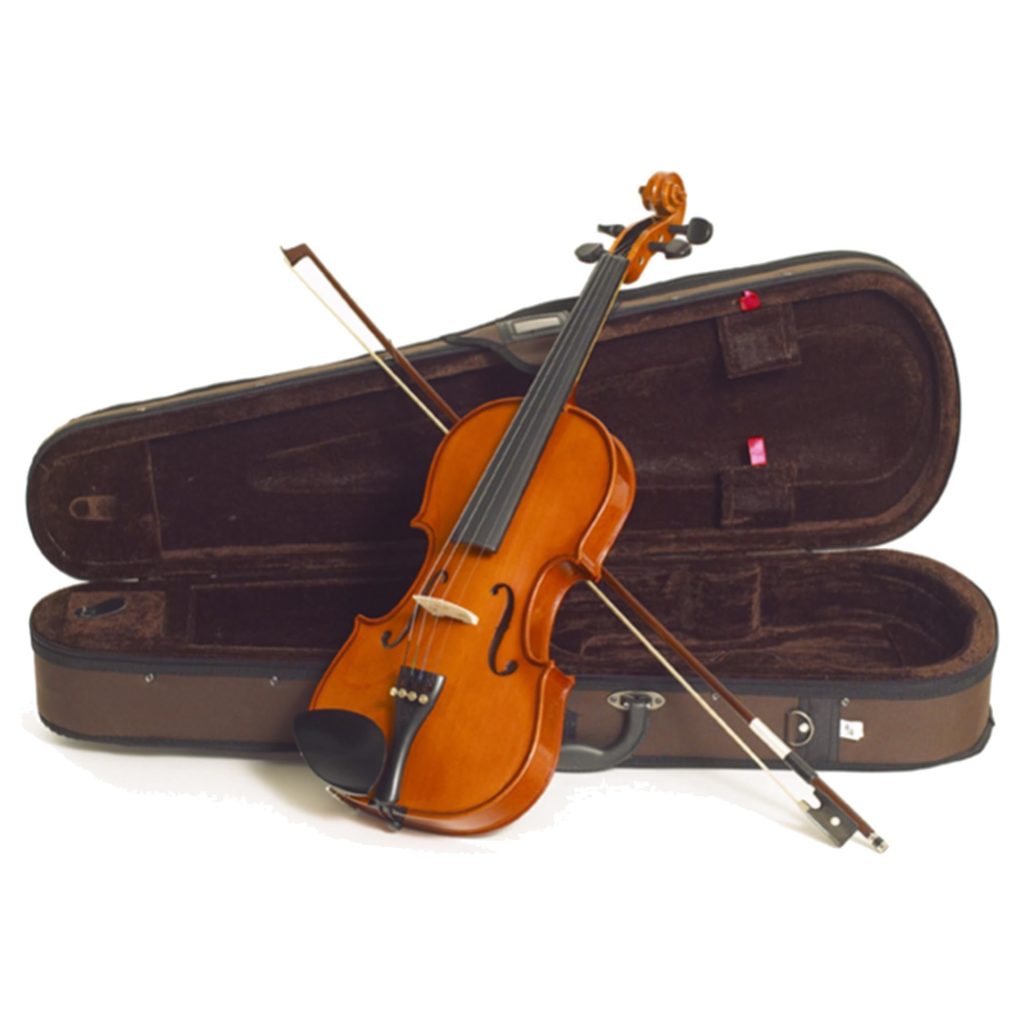
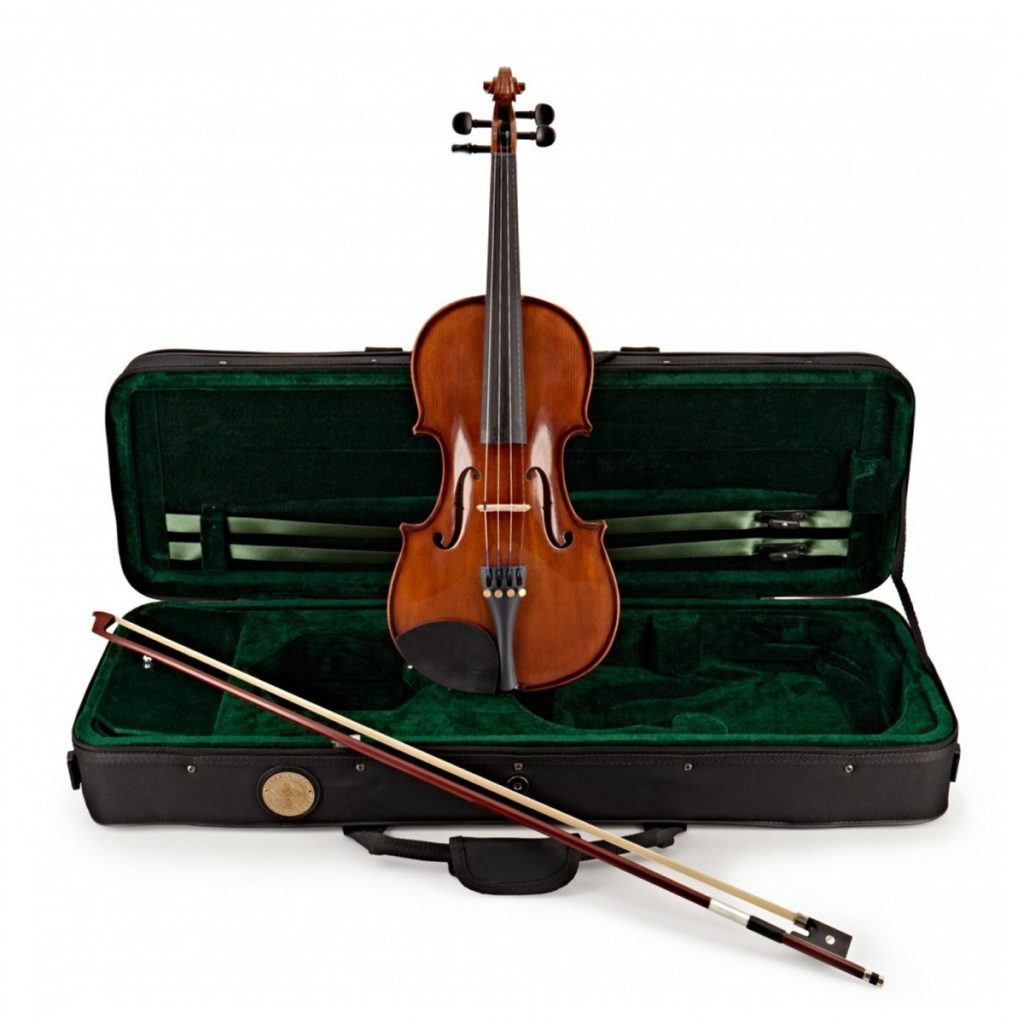
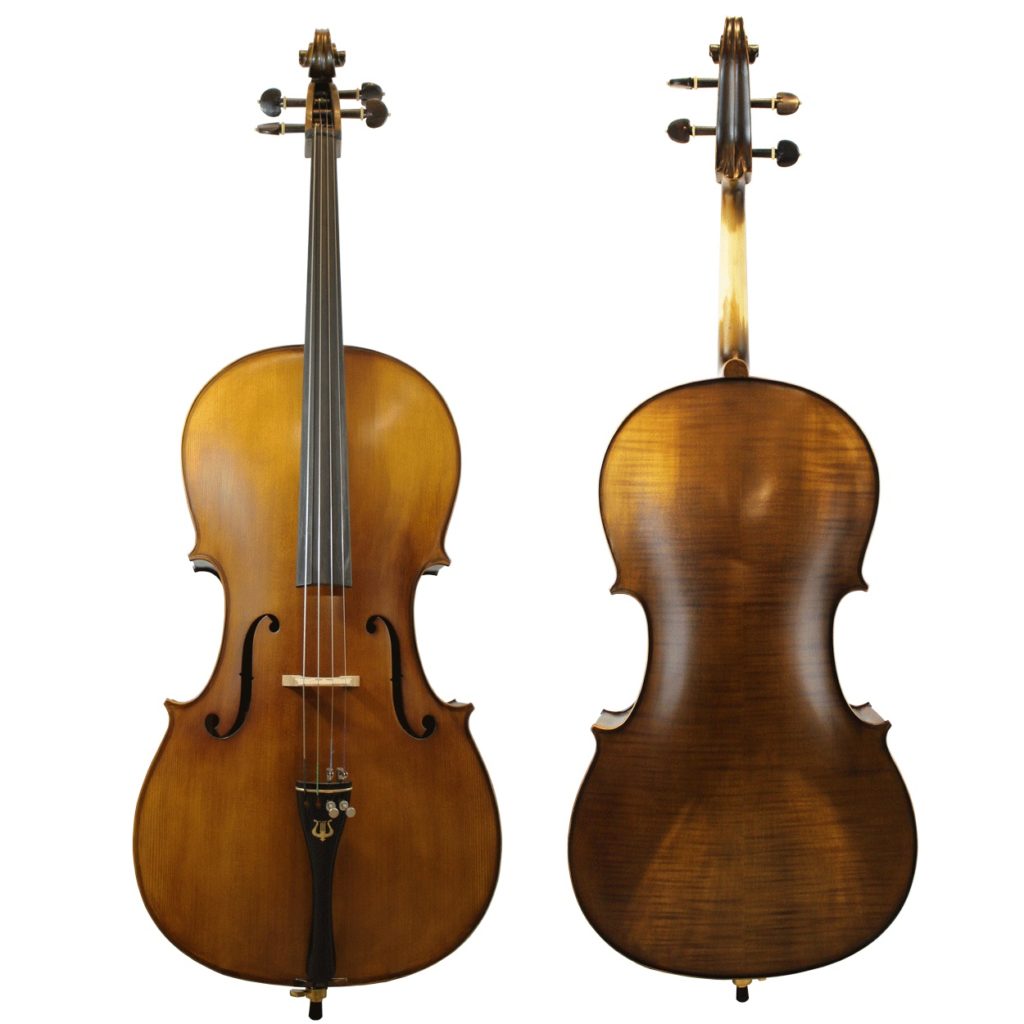
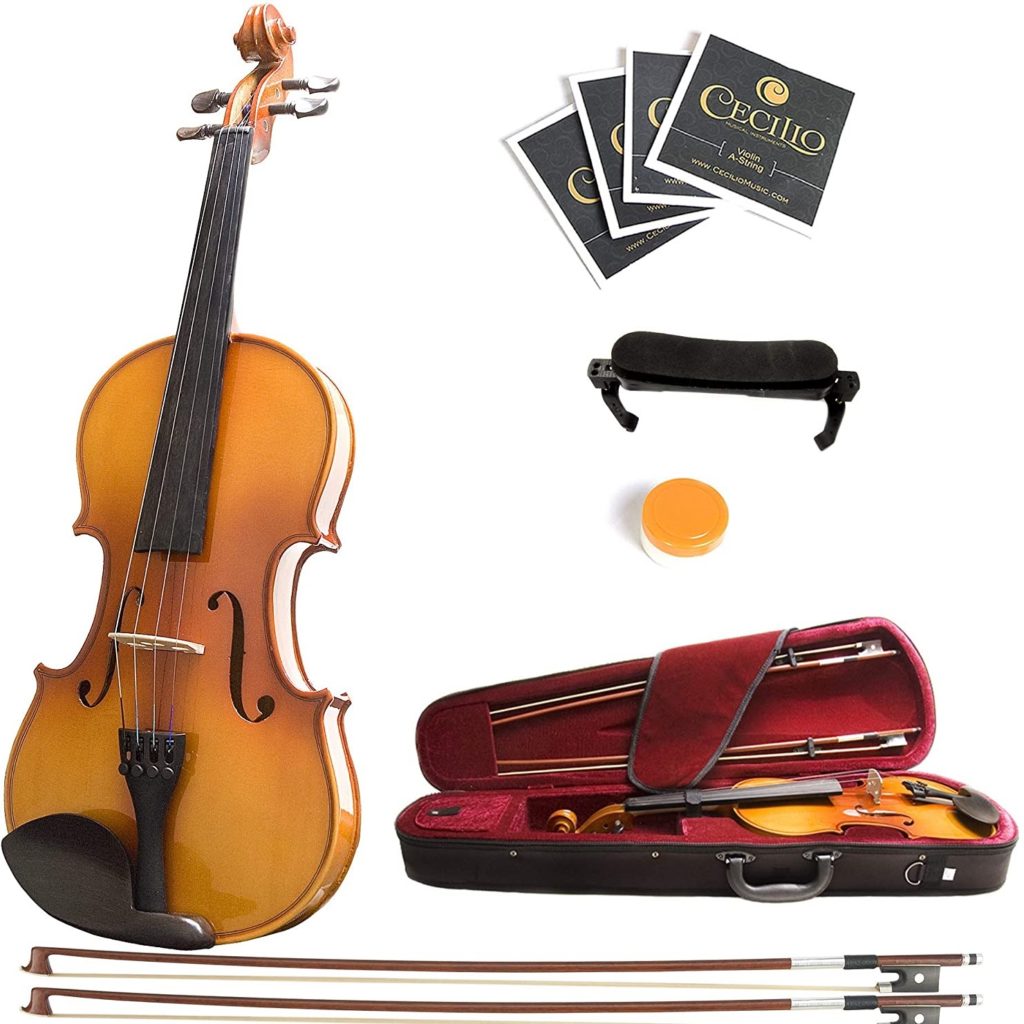
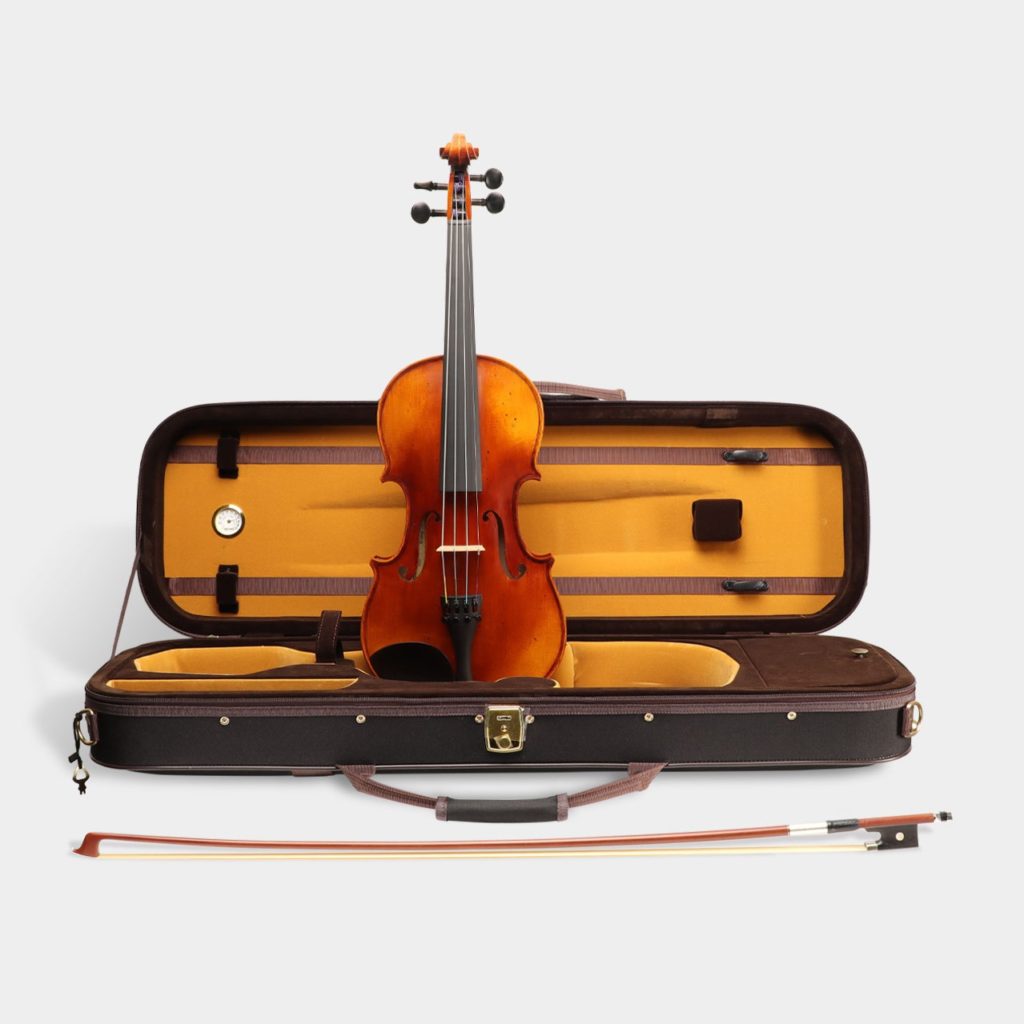

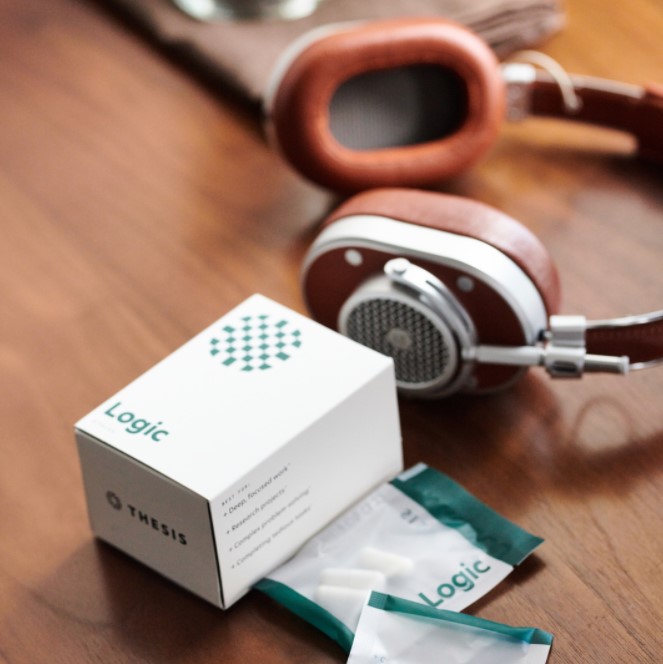
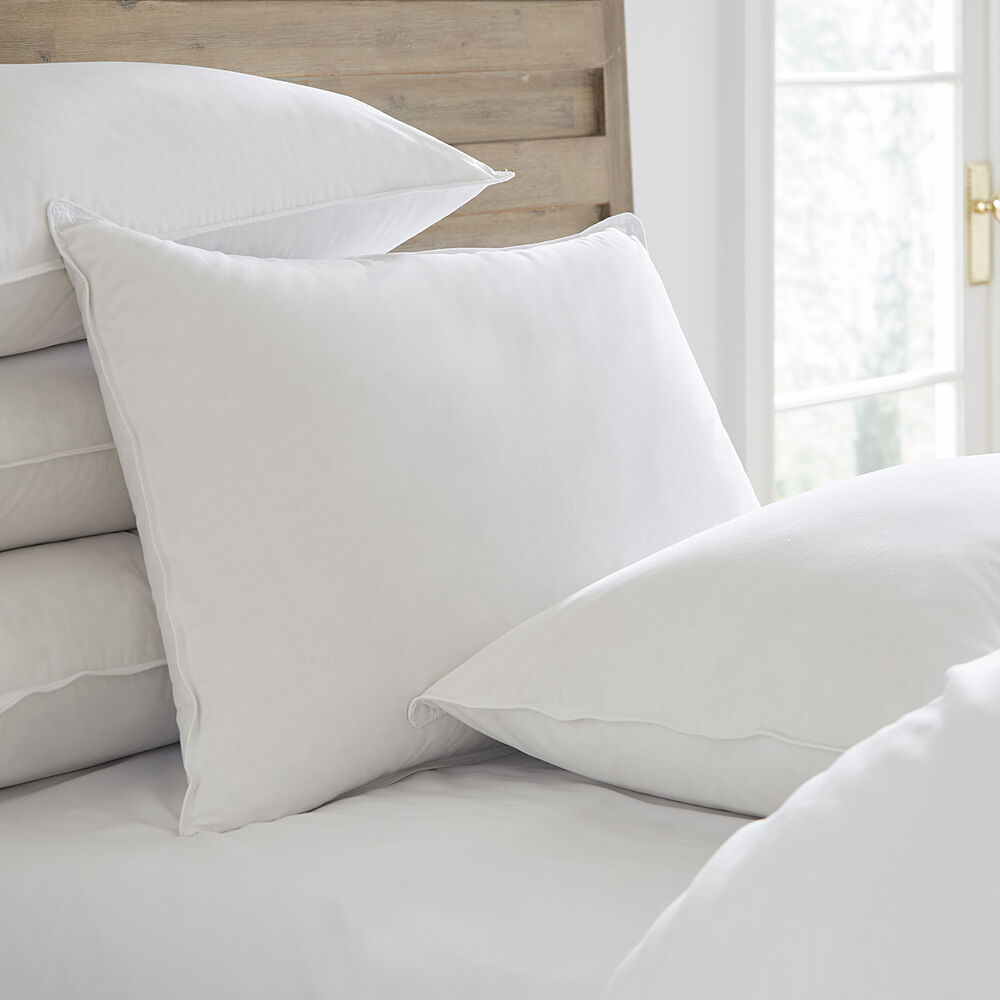


Ask the community or leave a comment
WRITE A REVIEWCustomer Reviews
Leave a review